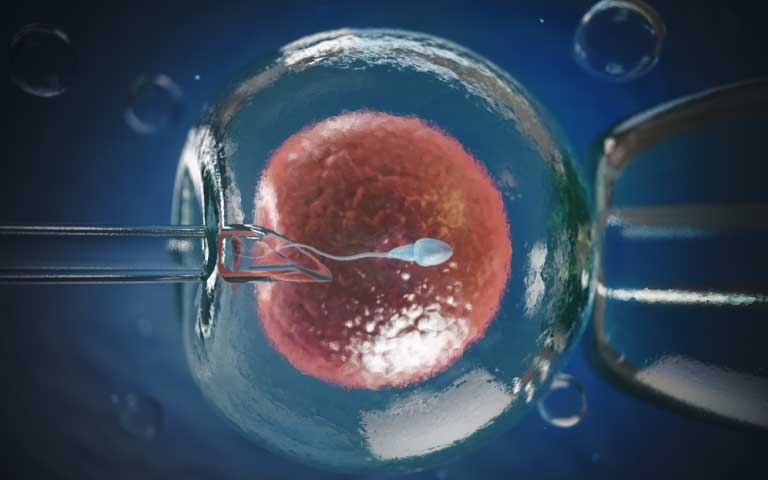
IVF Treatment – In Vitro Fertilization
What is IVF?
Process
Why Would I Need IVF?
Preparation
Procedure
Side Effects
Cost
Conclusion
What is IVF?
What is IVF?
A popular assisted reproductive technique, in-vitro fertilization, or IVF as it is commonly known is a complex series of procedures that help couples conceive a child. It is known to be one of the most effective forms of assisted reproductive technology.Process
IVF Process
During the IVF procedure, mature eggs are collected (retrieved) from ovaries and fertilized by sperm in a lab. Then the fertilized egg (embryo) or eggs (embryos) are transferred to a uterus. One full cycle of IVF takes about three weeks. Sometimes these steps are split into different parts and the process can take longer.
IVF can be done using a couple’s own eggs and sperm. However, in some cases IVF may involve eggs, sperm or embryos from a known or anonymous donor. In some cases, a gestational carrier or someone who has an embryo implanted in the uterus might be used, depending on many factors.
The chances of having a healthy baby using IVF depend on many factors, such as the maternal age and the cause of infertility. Also, if more than one embryo is transferred to the uterus, IVF can result in a pregnancy with more than one fetus (multiple pregnancy).
Why Would I Need IVF?
Why would I Need IVF?
IVF is used to treat infertility and help a couple conceive a healthy child. It is also one of the most primary treatments for women above the age of 40 who want to have a baby.
IVF may also be recommended if a couple may be facing one or more of the following issues:
- Blocked or damaged fallopian tubes
- Ovulation disorders
- Endometriosis
- Uterine fibroids
- Previous tubal sterilization or removal
- Problems with sperm production or function
- Unexplained infertility
- Genetic disorder/s
- Cancer or other health conditions
Preparation
IVF Preparation
Before beginning an IVF cycle the doctor may recommend a couple to undergo multiple tests and screenings which include the following:- Ovarian Reserve Testing: The doctor may test the follicle-stimulating hormone (FSH), estradiol (estrogen) and anti-mullerian hormone in your blood during the first few days of your menstrual cycle to determine the quality and quantity of eggs.
- Semen analysis: If not done as part of your initial fertility evaluation, your doctor will conduct a semen analysis shortly before the start of an IVF treatment cycle.
- Infectious disease screening: You and your partner will both be screened for infectious diseases, including HIV.
- Mock embryo transfer: Your doctor might conduct a mock embryo transfer to determine the depth of your uterine cavity and the technique most likely to successfully place the embryos into your uterus.
- Uterine examination: This involves examining the lining inside the uterus before starting IVF. This might involve a sonohysterography or hysteroscopy in which fluid is injected through the cervix into your uterus and an ultrasound to create images of your uterine cavity.
Procedure
IVF Procedure
- How many embryos will be transferred?
- What will the doctor do with the extra embryos?
- How will a multiple pregnancy be handled?
- Possibility of donor eggs, sperms, embryos, and gestational carriers
Side Effects
Side Effects of In Vitro Fertilization
After the embryo transfer, you can resume your usual daily activities. However, your ovaries may still be enlarged. One must consider avoiding vigorous activity, which could cause discomfort.
A few other typical side effects of IVF include:
- Passing a small amount of clear or bloody fluid shortly after the procedure. This happens due to the swabbing of the cervix before the embryo transfer
- Breast tenderness due to high estrogen levels
- Mild bloating
- Mild cramping
- Constipation
However, if you develop any severe pain after the embryo transfer, you must immediately contact your doctor. The doctor will then evaluate you for complications such as infection, twisting of an ovary (ovarian torsion) and severe ovarian hyperstimulation syndrome.
Cost
IVF Treatment Cost
The cost of IVF differs based on the patient’s history, screenings, tests, and number of IVF cycles involved. However, on an average, the cost ranges from INR 1,00,000 to INR 2,00,000. To understand the cost better, contact Motherhood Fertility & IVF Centre by calling 08067238900 or book an appointment with us.Conclusion
A time consuming but effective procedure, IVF is a viable option for those with complex medical conditions and factors to achieve a successful pregnancy.
To know more about IVF treatment and other fertility-related treatments, call us at 080-67238900 or click here to book your appointment with our top fertility specialists at Motherhood Fertility & IVF Centers.
Relevant Videos
Related Services
First step towards infertility is correct diagnosis and NOT treatment.
FAQs
The success rate of IVF depends on the center, doctor, maternal age, lifestyle of the patient, reproductive history, and the causes of infertility.
Some risks associated with IVF include multiple births, low birth weight, premature delivery, miscarriage, ovarian hyperstimulation syndrome, ectopic pregnancy, birth defects, ovarian cancer
About 12 days to two weeks after egg retrieval, your doctor will test a sample of your blood to detect whether you’re pregnant. If you’re not pregnant, you’ll stop taking progesterone and likely get your period within a week.
